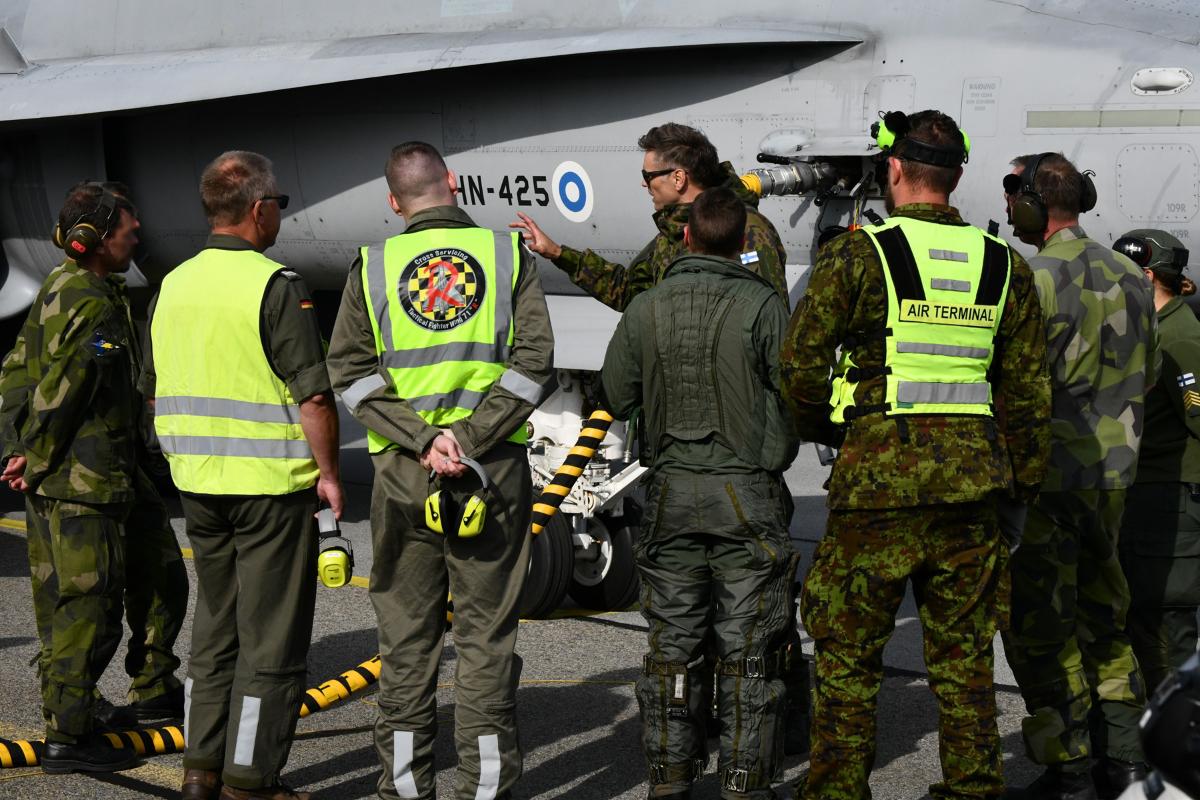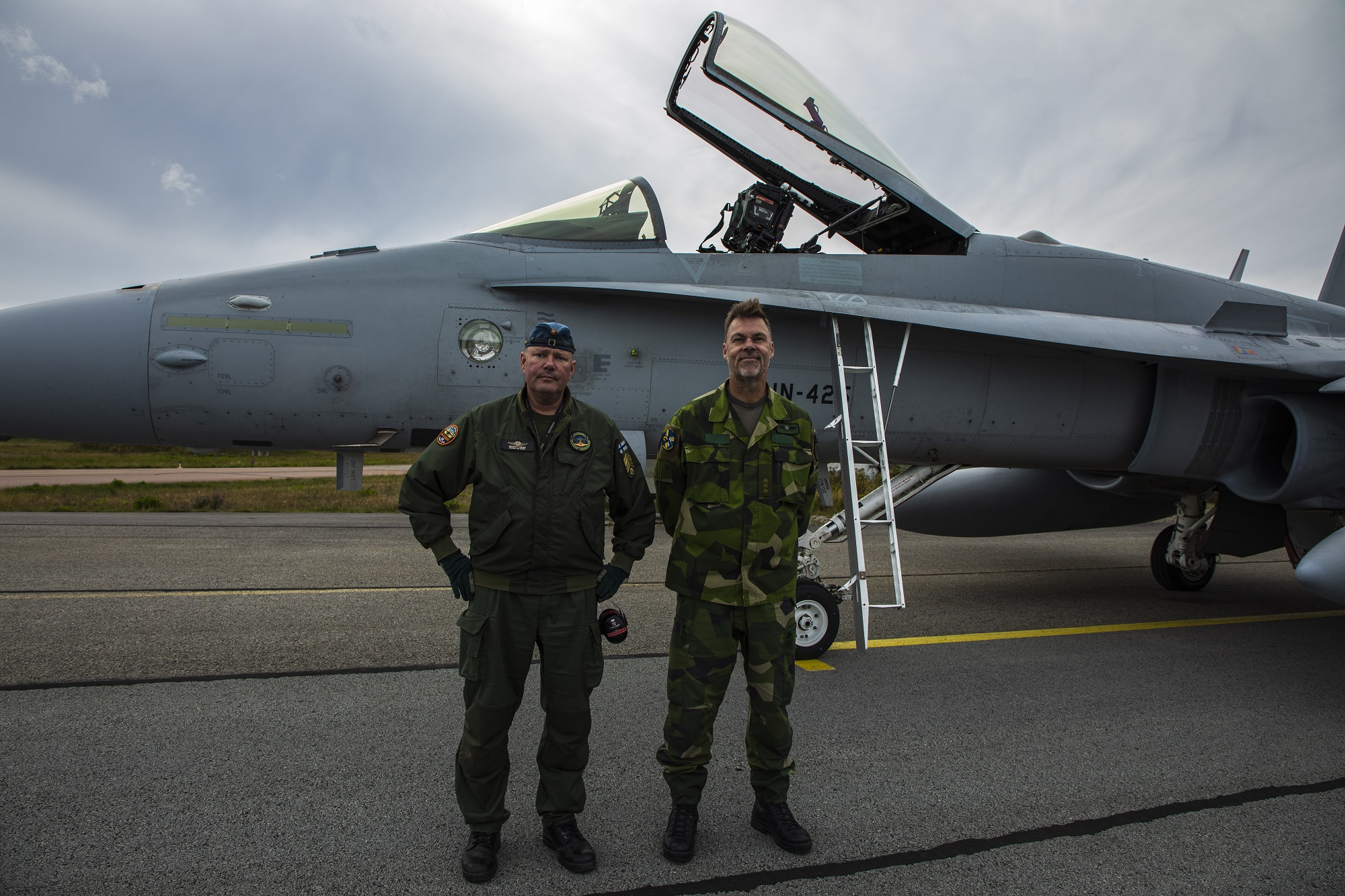Allied mechanics on a Hornet course at the Air Force Academy

The Air Force Academy organised the first F/A-18 Hornet Aircraft Cross Servicing Basic Course for Allied mechanics from 1 to 5 September 2025. The course brought together airmen from the Swedish, Norwegian, Estonian and German air forces.
Aircraft cross servicing means that mechanics from different nations’ air forces are able to carry out essential line maintenance tasks for each other’s fighter jets. This is an important element of NATO’s Agile Combat Employment (ACE) concept, which emphasises the mobile and flexible use of Allied airpower. The aim is to ensure that fighter jets from different nations can operate as smoothly as possible from each other’s air bases.
Cross servicing cooperation provides tangible benefits in international exercises, in NATO’s collective peacetime missions, and in crisis situations. The better the mechanics of NATO member nations’ air forces know each other’s fighter jets, the easier it is to employ Allied airpower in a mobile and flexible way, also in times of conflict or war.
First Hornet course for Allies
As part of Finland’s NATO integration, the Air Force Academy’s course offering now includes the F/A-18 Hornet Aircraft Cross Servicing Basic Course for Allied aircraft maintenance personnel. The one-week course was organised at Tikkakoski Air Base for the first time from 1 to 5 September 2025, with a total of 16 participants from Sweden, Norway, Estonia and Germany.
All participants were experienced maintainers, so the course combined theoretical training with hands-on tasks. As a part of the practical training, the Allied mechanics took part in conducting F/A-18 Hornet turnaround inspections and hot-pit refueling procedures together with Finnish mechanics.
‒ The objective of the Aircraft Cross Servicing Basic Course, now organised for the first time, is that Allied mechanics get to know the general turnaround inspection points of the F/A-18 Hornet, and get familiar with the use of doors, panels, boarding ladders, and safety pins, says Course Instructor, Chief Master Sergeant Veli-Matti Terämä.
‒ The mechanic must be able to receive and launch the aircraft, as well as conduct hot-pit refueling procedures. All the activities have to be carried out safely, and the mechanics must also be able to instruct rescue personnel in case of an emergency, he emphasises.
One of the course participants was Master Sergeant Peter from the Swedish Air Force. He serves as an instructor of JAS 39 Gripen fighter mechanics at the Swedish Armed Forces Technical School in Halmstad.
‒ The course has been useful, because we are developing Aircraft Cross Servicing training also in Sweden. Like Finland, we are a new member of NATO. Aircraft Cross Servicing is important, because it enables flexible operations, Peter says.
‒ The Gripen and the Hornet have both differences and similarities. The Hornet is twin-engined, and larger than the Gripen. On the other hand, the jets have some similarities, for example the Volvo RM12 engine of the Gripen is a Swedish-built version of the General Electric F404 engine of the Hornet, he says.




